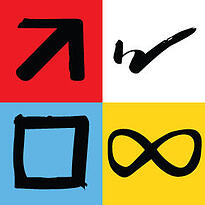“Probably the most important competency for leaders to have in today’s rapidly changing world.” What could be so powerful and important to leadership that would compel Marshall Goldsmith to make this statement? Agility.
Leadership agility is more than just the latest buzzword in the leadership literature. In fact, Forbes has described it as “the ingredient that will define the next generation of leaders”. With the increasing complexity that leaders face in today’s business landscape, there is good reason why the experts are flying the agility flag. Today’s leaders must continue to rely on collaboration, connection and influence to gain business results. This requires nimbleness, as leaders make adjustments depending on whom they are interacting with and for what reason. This adjustment, or perhaps more accurately described as alignment, is the essence of leadership agility.
Although many leaders are quick to agree that this is an important, if not necessary, competency to be successful, they often struggle in how to bring about this quality. When I ask participants in my workshops what qualities leaders MUST have to be successful, they all tend to arrive at a similar list; passion, ambition, innovation, creativity, vision, commitment, accountability, empathy, communication etc. I ask which of these characteristics leaders can do without, and participants always answer correctly; none of them!
Great leaders ARE all of these things but they certainly can’t be all of these at once. This is the heart of agility. Great leaders know when to be what, and how to get there. At this point, those that know FEBI well have likely noticed that what we are referring to is Whole Leadership, a concept Ginny Whitelaw developed to describe a leadership approach that utilizes all four of the fundamental energy patterns of personality. These energy patterns, which are measured by a coaching instrument called FEBI, correspond with the four main categories of leadership success. Great leaders must be passionate, focused and courageous as described by the Driver pattern. They must be honest, committed, and responsible as described by the Organizer pattern. They also must communicate effectively, connect, and have empathy as described by the Collaborator pattern. And finally, great leaders must be innovative, inspirational and have vision as described by the Visionary pattern.
A leader becomes an agile leader when they become skillful at the ability to recognize which pattern a particular situation calls for and effectively makes the shift to move into that pattern. In essence, this means shifting ones internal state to match what they want to create in the external world around them. This has been a primary focus of my own work developing leaders at all levels of the organization and why we developed the Targeting Your Leadership Energy course. To become an agile leader, they must first gain self-awareness of how these patterns show-up with-in themselves. I spoke much more on this topic in my Choice Magazine article on Coaching with Instruments: Taking the Guess Work out of Coaching. Armed with this self-awareness, leaders are empowered to make a choice to shift from a preferred, and thus more utilized, pattern to one that is better aligned with the outcomes they are trying to bring about. The more they practice this, especially with less preferred patterns, the more agile they become.
In my own coaching I’ve found the FEBI to be the most useful framework to developing leadership agility. In other words, agile leadership is whole leadership and the FEBI is a powerful tool to get you there.










